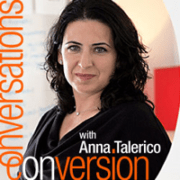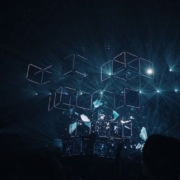Why Landing Pages Seem So Complicated and What to do About It
Landing pages baffle and confuse us. There are a dozens of components that could be used on them: testimonials, trust symbols, long-form copy, video, Johnson boxes, risk reversal, and more.
One of the biggest problems is that we believe that they are Web pages first and foremost. This implies that they have our company logo, our Web site navigation, footer links, and that they are designed like our corporate Web site. This creates the wrong context for our landing pages that make them complex, confusing and ineffective.
If you’re new to the term, a landing page is a page with singular focus. It serves traffic from a single source generally and asks for one action to be completed: complete a form, buy a product, etc.
What if we started with the call to action and grew a page from there? Which components would we add and why?
We’ll start with this:
![]()
and built our landing page from there. We might find things less baffling.
Watch the video here. It’s part of our CRO Training. And it’s free.










Totally agree! Here is an example of Etrade’s landing page and a simple “reduction” version. The latter is much more consumable for being less of a “site page”
Original: http://bit.ly/h6kFMt
LP’d: http://matt.bo.lt/9uiaq
Totally agree! Here is an example of Etrade’s landing page and a simple “reduction” version. The latter is much more consumable for being less of a “site page”
Matthew, your 30 seconds could serve Etrade well. I love how obvious your changes would be to anyone (even eTrade?) Thanks for sharing.
Keep it up, the information is very okay and i will recommend it to my fans
love this way of thinking.
taking it even further: instead of even the CTA button on the page, what if we start with key emotional states in the user’s mind? what fundamental needs / fears / desires do they have? what pictures & words ignite the psyche to respond?
how can we construct a CTA that aligns with these needs, these pictures, and what services are useful enough that people will use them / pay for them?
in fact this is the kind of thinking we should begin with, before even writing one line of code.
Dave, you speak of personas, which have at their core the event in their lives that trigger their visit. Much wisdom comes from this kind of insight. Just as Olivander, the Wand Maker from Harry Potter intones “The wand chooses the wizard,” I say, “The Web site chooses the visitor.” Not the other way around. Thanks for the comment.
I’ll take Big Red Button for a $ Million Brian!
It’s so simple!